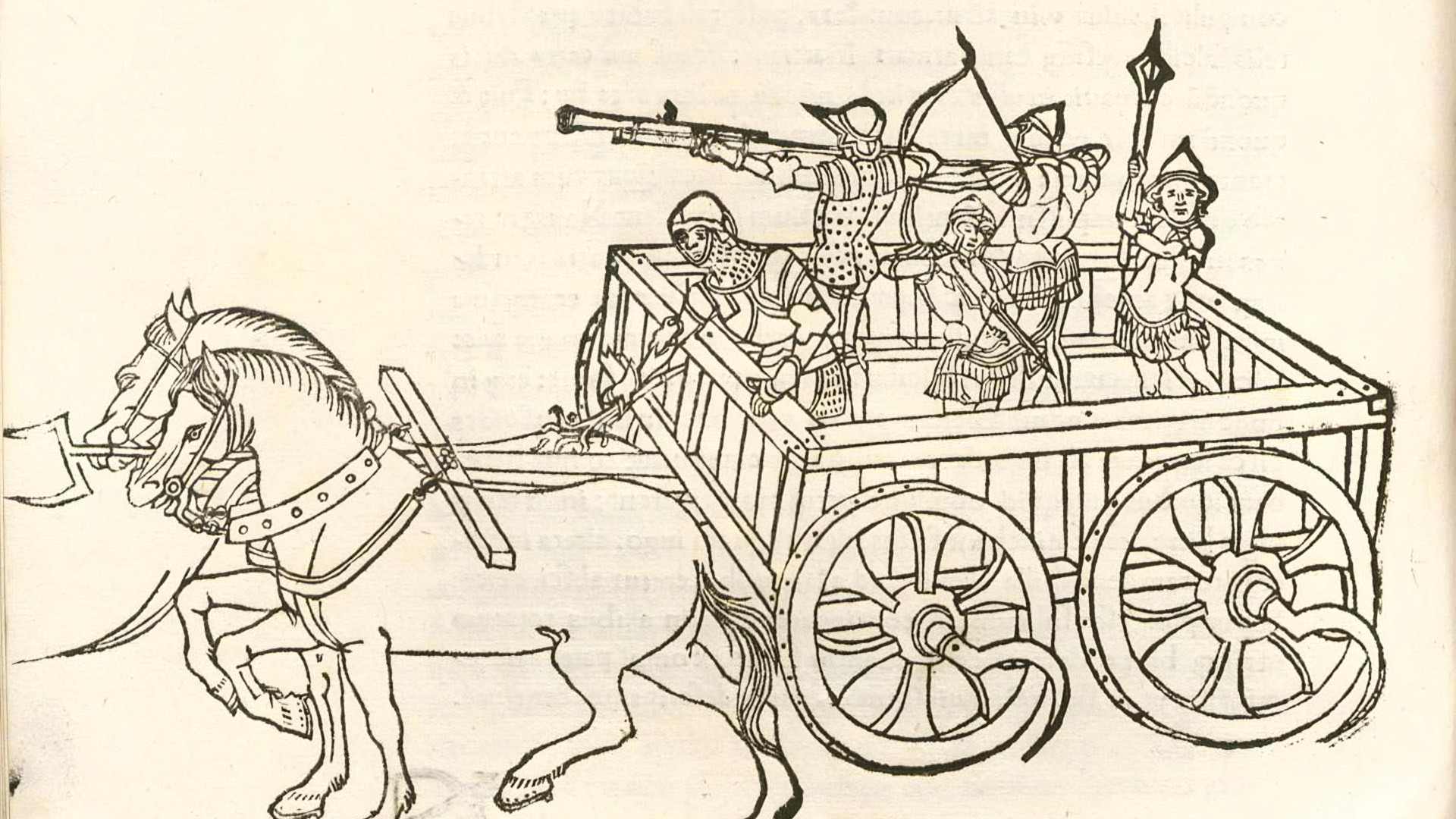This is from an article on the “Warfare History Networkâ€.
I’ll add the link at the bottom but you may need to subscribe to read it.
“The Hussites, all but forgotten today, were a 15th-century sect of religious reformers, forerunners of the Protestant Reformation that was to come a century later. Remnants of their ideas still exist in several Christian groups, including the 825,000-member Moravian Church, or Unity of Brethren. But when history remembers the Hussites at all, it is more for their “hand cannons†than for their religious zeal. Using these handheld gunpowder weapons, the Hussites fought and defeated formidable armies sent by the Holy Roman Empire, the Catholic Church, and the Kingdom of Bohemia. Theirs was the first use of such weapons in Europe, and it changed forever the face of European warfare by demonstrating that properly armed infantry could defeat armored knights on horseback.â€
(From an article by Chuck Lyons)
Early handguns were simply smaller versions of cannons. They were single-shot, smooth-bore, muzzle-loading tubes eight to 12 inches long and closed at the breech end with the exception of a small touch hole. A slow match was applied to the touch hole to fire the weapon. The slow match, which was itself another European innovation, was a piece of cloth that had been soaked in potassium nitrate and then dried, which enabled it to smolder without going out. Hand cannons generally were made of bronze or brass, although a few were made of iron. They rested on a rounded piece of wood that was held under the arm of the gunner or leaned against the ground to steady the gun. These handles also protected the gunner from the heat of the discharge and helped control the weapon’s recoil.



 warfarehistorynetwork.com
warfarehistorynetwork.com
I’ll add the link at the bottom but you may need to subscribe to read it.
“The Hussites, all but forgotten today, were a 15th-century sect of religious reformers, forerunners of the Protestant Reformation that was to come a century later. Remnants of their ideas still exist in several Christian groups, including the 825,000-member Moravian Church, or Unity of Brethren. But when history remembers the Hussites at all, it is more for their “hand cannons†than for their religious zeal. Using these handheld gunpowder weapons, the Hussites fought and defeated formidable armies sent by the Holy Roman Empire, the Catholic Church, and the Kingdom of Bohemia. Theirs was the first use of such weapons in Europe, and it changed forever the face of European warfare by demonstrating that properly armed infantry could defeat armored knights on horseback.â€
(From an article by Chuck Lyons)
Early handguns were simply smaller versions of cannons. They were single-shot, smooth-bore, muzzle-loading tubes eight to 12 inches long and closed at the breech end with the exception of a small touch hole. A slow match was applied to the touch hole to fire the weapon. The slow match, which was itself another European innovation, was a piece of cloth that had been soaked in potassium nitrate and then dried, which enabled it to smolder without going out. Hand cannons generally were made of bronze or brass, although a few were made of iron. They rested on a rounded piece of wood that was held under the arm of the gunner or leaned against the ground to steady the gun. These handles also protected the gunner from the heat of the discharge and helped control the weapon’s recoil.



Hussite Hand Cannons: A Revolution in Gunpowder Warfare
The use of newly devised “hand cannons†by the Hussites, a 15th-century religious sect, changed the face of European warfare forever.










































































